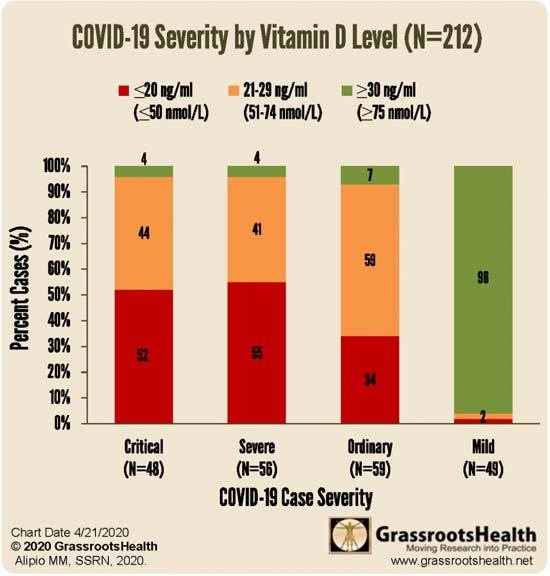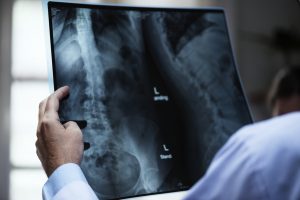Unlocking the Mysteries of Long COVID
As all regular readers of our blog know, we talk a lot about the importance and benefits of proper breathing technique. For the last year, we’ve discussed COVID-19 extensively, for obvious reasons. Today we want to share this really interesting article, ‘Unlocking the Mysteries of Long COVID’, with you as it focuses on the intersection of these two topics. The breathing exercises that we are passionate about at Backs Etc are the foundation of a healthy body and mind, and this article indicates how they may also be the key in the recovery from a group of symptoms that are being described as ‘long-COVID’. But why wait to develop a life-threatening disease when you can use these techniques in your daily life? Good breathing can reduce the likelihood of developing many chronic ailments and enhance your body’s capacity, as we have discussed in previous blog posts. Poor breathing (especially through the mouth) can put your whole system into fight-flight mode, changing your biochemistry, worsening mood issues and insomnia and depressing your immune system.
The article describes the severe symptoms that can persist for months after an acute COVID infection. It focuses on two groups of patients at Mount Sinai hospital in New York who were still suffering from symptoms months after their initial illness. The first group had obvious damage to their hearts or lungs, so were simply referred to the correct specialist for treatment. The second, far larger, group had symptoms such as extreme tiredness, brain fog, chest tightness, shortness of breath, tachycardia, or gut dysfunction, often causing long-term disability. But none of the tests showed any pathology, leaving the doctors without an obvious course of action. This is something we have been seeing for many years, when a collection of similar symptoms have been labelled as post-viral, fibromyalgia or chronic fatigue syndrome, and where patients have sometimes been made to feel that the problem is not real and ‘all in their head’.
The piece talks at length about the difficulties experienced by these patients and how the rehabilitation team tried to help using a variety of treatments and protocols. Finally, they came to the conclusion that the most effective form of initial treatment was breathing exercises. Restoring the breathing patterns was an essential precursor before other rehabilitation protocols would help. They realised that even mild COVID cases might be affecting respiration long after the acute phase of the disease. Evidence began to accrue that long-COVID patients were breathing shallowly through their mouths and into their upper chests. By contrast, proper breathing happens in the nose and goes deep into the lower lungs, stimulating the vagus nerve along the way, and helping regulate heart rate and the nervous system. This is exactly the type of breathing we teach at Backs Etc.
Similar symptoms (fatigue, shortness of breath, racing heart) can occur in people who have low carbon-dioxide levels in their blood, a condition known as hypocapnia, which can be triggered by hyperventilation, or shallow, rapid breathing through the mouth. Oxygen is key to our health, but carbon dioxide plays an equally crucial role by balancing the blood’s pH level. We teach patients to decrease their breathing rate (which should be around 5-6 breaths/min not the 10 or more that is increasingly common), and use breath holding exercises to increase the tolerance to carbon dioxide levels. A very quick and easy way to test your current tolerance is to take a normal nasal inhale and exhale, holding the breath at the end of the exhale. Then, using a timer, see how long before you feel the first need to breathe in again. You only want to hold this to a point where you can then take a gentle nasal inhale, not holding your breath to the point that you need to gulp air to recover. This is called a ‘control pause’, and is detailed in the book The Breathing Cure. If you have a healthy tolerance for carbon dioxide, your control pause should be at least 30 seconds (and more than 45 seconds for optimal athletic performance). If less than 20 seconds, this is something that should be addressed using breathing drills to optimise your health and performance.
In conclusion, it makes us happy to see more mainstream medics and researchers starting to validate the approach to breathing that we’ve been practising and teaching for years. It’s also encouraging that there are at least some positives coming out of this difficult COVID period. One final takeaway is that breathing drills should be for life, something you should be practising consistently for basic health maintenance, just like brushing and flossing your teeth. If you want more information, drop us a line or schedule an appointment to see how we can help you improve your breathing and quality of life.


 Four weeks into lockdown and we are well into our new routine here in Clapham: daily meditation and exercise followed by video calls with patients, a daily walk, and more time for study, reading etc. We are also preparing for the possibility that we will contract COVID-19 at some time over the next year. We are approaching this as though we were training for a race or other athletic endeavour. We are not hoping to get it. However, with the reality of a
Four weeks into lockdown and we are well into our new routine here in Clapham: daily meditation and exercise followed by video calls with patients, a daily walk, and more time for study, reading etc. We are also preparing for the possibility that we will contract COVID-19 at some time over the next year. We are approaching this as though we were training for a race or other athletic endeavour. We are not hoping to get it. However, with the reality of a 
 Quarterly corticosteroid injections for knee osteoarthritis increased cartilage loss over the course of 2 years without providing any clinical benefit, according to a randomized controlled trial. So think before you opt for that steroid injection.
Quarterly corticosteroid injections for knee osteoarthritis increased cartilage loss over the course of 2 years without providing any clinical benefit, according to a randomized controlled trial. So think before you opt for that steroid injection.
 Current guidelines for sun exposure are unhealthy and unscientific, controversial new research suggests—and quite possibly even racist. How did we get it so wrong?
Current guidelines for sun exposure are unhealthy and unscientific, controversial new research suggests—and quite possibly even racist. How did we get it so wrong? Veganism is becoming more and more popular these days. Understandably so, as people are becoming increasingly concerned about the impact of Intensively farmed meat and dairy’s toll on the environment. However, in this article, farmer Isabella Tree discusses the potential negative implications that veganism can have on the sustainability of our farmland, as well as our health. This article is a great read no matter which side of the debate you may stand on.
Veganism is becoming more and more popular these days. Understandably so, as people are becoming increasingly concerned about the impact of Intensively farmed meat and dairy’s toll on the environment. However, in this article, farmer Isabella Tree discusses the potential negative implications that veganism can have on the sustainability of our farmland, as well as our health. This article is a great read no matter which side of the debate you may stand on.
 A summary of the evidence on the reliability of scans for musculoskeletal issues, showing that in most cases there are just any many people with structural issues that don’t have pain and dysfunction. It’s not how it looks, but how it works that is important, that’s why at Backs Etc we focus on improving movement patterns.
A summary of the evidence on the reliability of scans for musculoskeletal issues, showing that in most cases there are just any many people with structural issues that don’t have pain and dysfunction. It’s not how it looks, but how it works that is important, that’s why at Backs Etc we focus on improving movement patterns. New research finds that children and adolescents who spend most of their time barefoot develop motor skills differently from those who habitually wear shoes. Published in Frontiers in Pediatrics, this is the first study to assess the relevance of growing up shod vs. barefoot on jumping, balancing and sprinting motor performance during different stages of childhood and adolescence. The study shows that habitually barefoot children are noticeably better at jumping and balancing compared to habitually shod children, particularly from 6-10 years of age. While these beneficial barefoot effects diminished in older adolescents, the research nevertheless highlights the importance of barefoot exercise for motor development as children grow and mature.
New research finds that children and adolescents who spend most of their time barefoot develop motor skills differently from those who habitually wear shoes. Published in Frontiers in Pediatrics, this is the first study to assess the relevance of growing up shod vs. barefoot on jumping, balancing and sprinting motor performance during different stages of childhood and adolescence. The study shows that habitually barefoot children are noticeably better at jumping and balancing compared to habitually shod children, particularly from 6-10 years of age. While these beneficial barefoot effects diminished in older adolescents, the research nevertheless highlights the importance of barefoot exercise for motor development as children grow and mature.